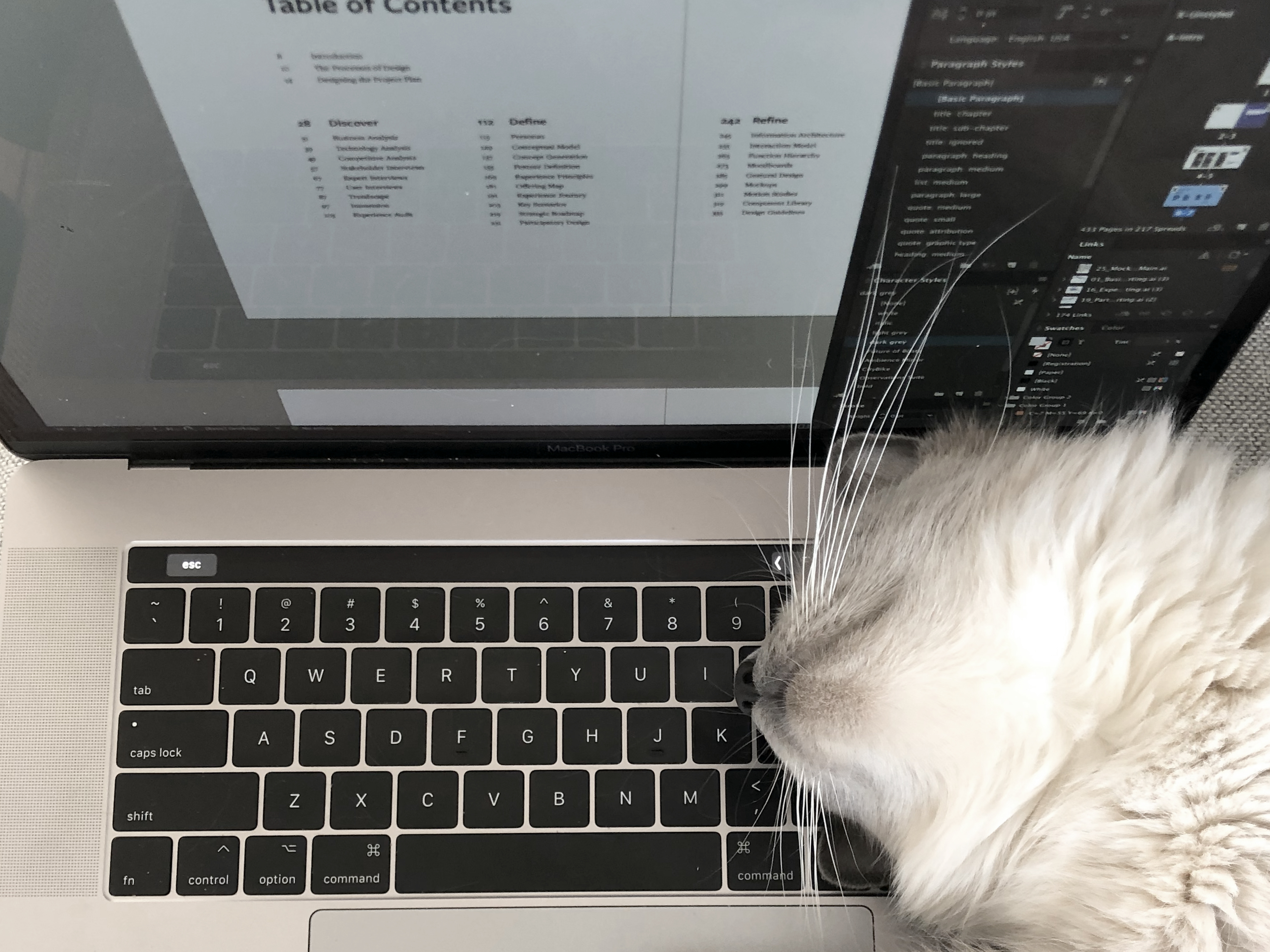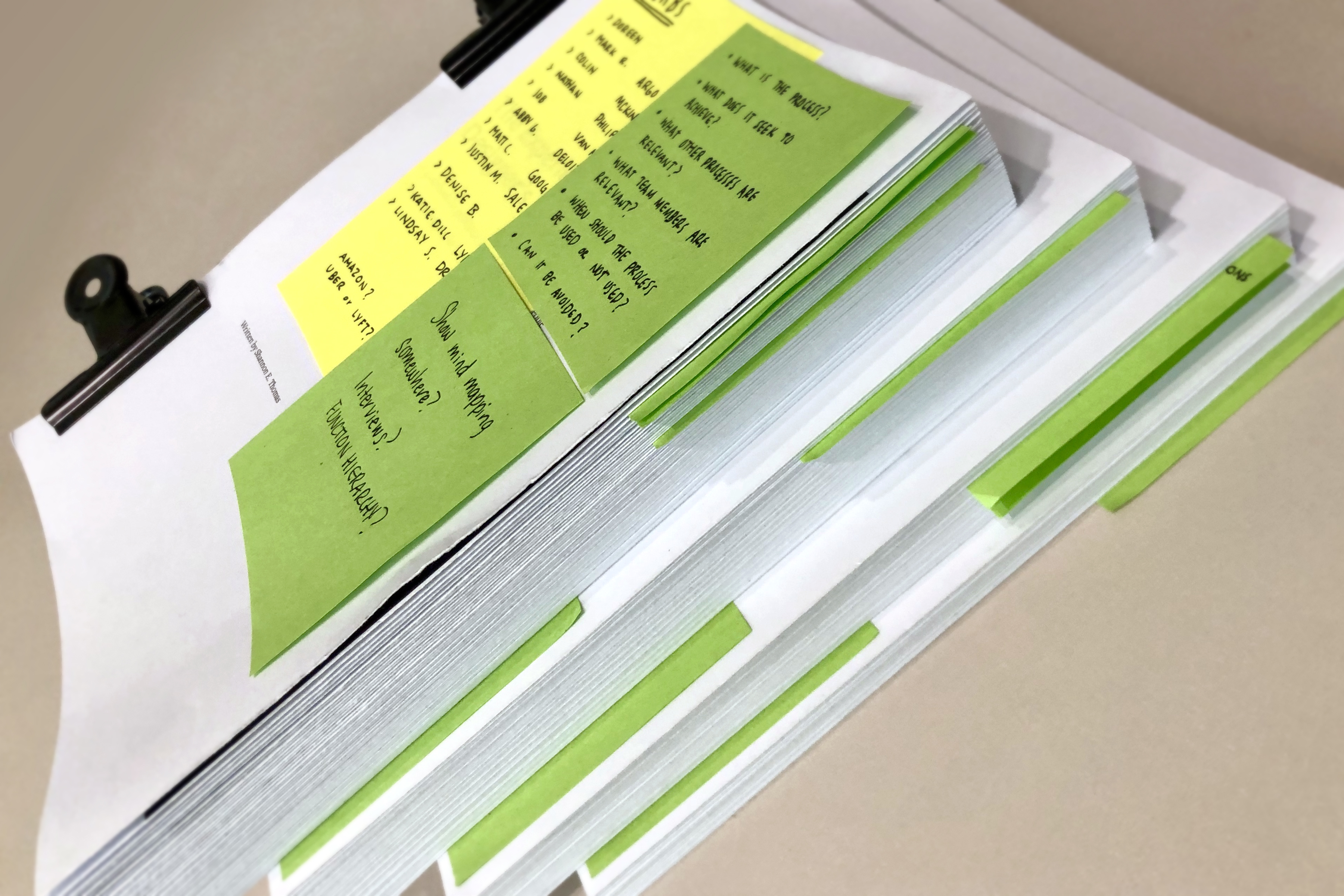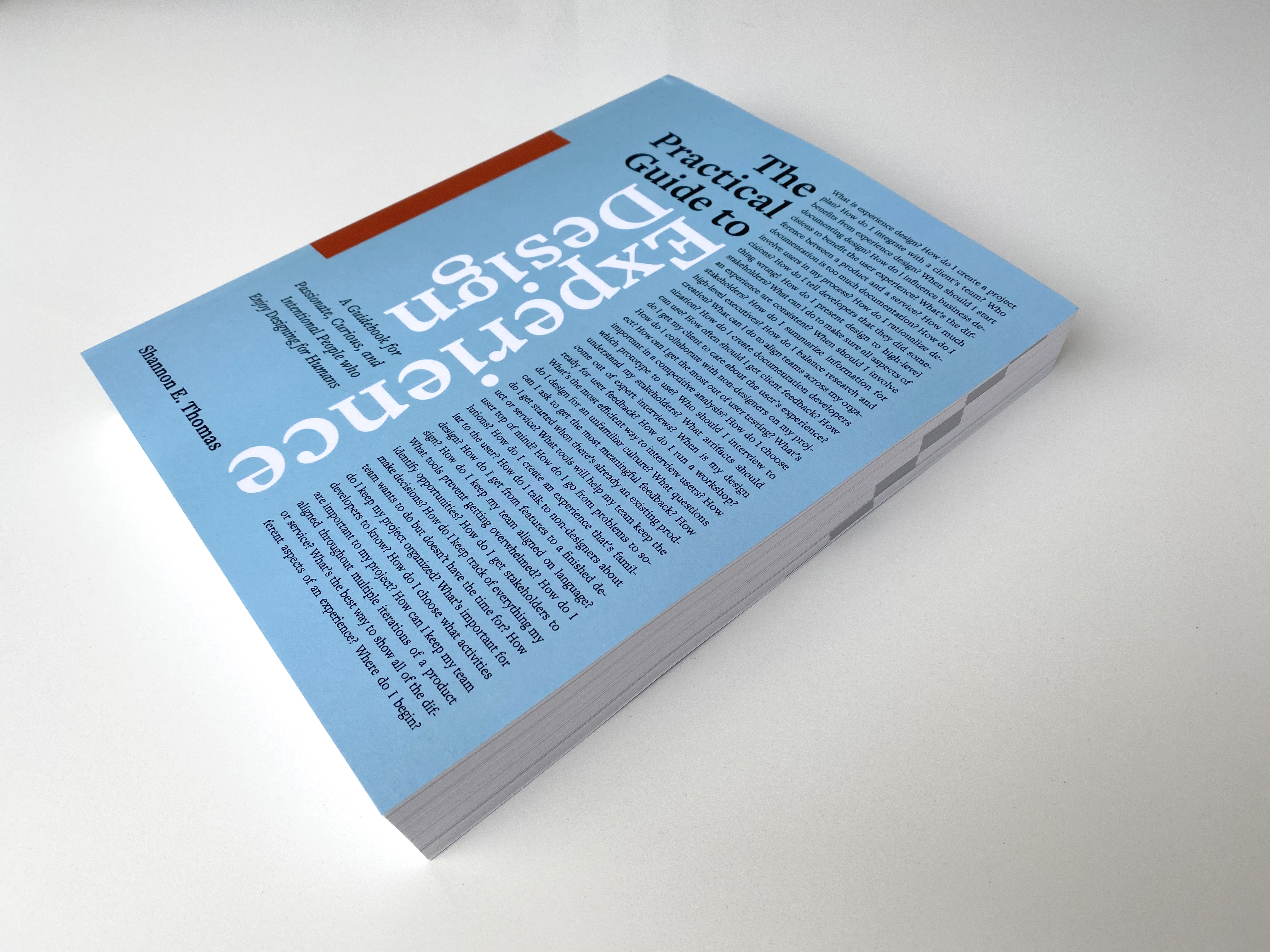2020.03.17
Adventures in Self-Publishing
Yesterday I received the print proof of my book. In it, I can see the years of experience, research, writing, and design that went into its creation. It’s as full of memories as it is of lessons learned. In this post, I’ll share some of those lessons in hopes of demystifying the many different ways in which you might publish a book.

Before diving in, a disclaimer: I have a lot of friends, former colleagues, and Twitter acquaintances who’ve published books, each having gone their own way and followed their own path. Some are fully self-published, some work with publishers who specialize in their industry, and others use big-name publishers. Their experiences helped inform my decisions. I also owe many thanks to Girl Friday Productions who helped me navigate my way through this process once I decided to go the self-publishing route. This is not intended as an advertisement for their services (though might come across that way because they’ve been so darn helpful).
Finding a Publisher
When I started writing The Practical Guide to Experience Design, I wasn’t thinking about the publishing process. I was overwhelmed with figuring out what content to include and then creating that content, testing that content, revising that content, and so on. It wasn’t until I was 90% confident in my creation that I even starting looking for publishers. For my particular book, full of colorful examples and illustrations, this was a good choice. Had I chosen a publisher or means of printing too early, it likely would have led to compromises on the content or format of the book. That being said, I would not recommend this approach for everyone. I was writing and designing simultaneously, while most people write first and lay out later. For the text-first approach, I’d recommend figuring out your constraints early on to minimize design effort later. In case you’re wondering, I’ve laid out my book four times. I have no regrets though, because with each new layout it only got better!
With the book written, examples created, and layout mostly finalized, I began looking for publishers. I started by looking at the publisher names on the sides of other design books, including those written by friends. I made a list and visited so many websites, most of which offered little help for aspiring authors. A couple of things became immediately evident:
- Many publishers want a proposal rather than a manuscript. I was already too far along in the process for these.
- Many publishers have a set layout for books. For text-based books, this works. For my book full of visual examples, these formats were a non-starter.
At this time, I was also scouring the internet for resources and chatting with friends who had either published or were considering publishing. The more I learned, the more dread I had about the process:
- Some publishers want authors to commit to selling a percentage of their own books. This could mean I’d be on the hook for selling around 5,000 of my own books. As someone with a lot of experience but little status as an influencer, this was incredibly daunting.
- Other publishers are very hands on, a process that can end up both compromising the author’s vision and pushing the publishing date out by years.
With a handful of rejections (or just silence) from big-name publishers, I began looking into more self-publishing options. I’d worked with Jan Chipchase at frog and funded his book via KickStarter. After reading Jan’s incredibly detailed and helpful account of his experience, I began seriously considering self-publishing.
Of course, I am not Jan Chipchase (I already mentioned my weak influencer status), and, although I had run a successful KickStarter in the past, I was not looking forward to doing it again. I also had reservations about finding a printer who could print the book affordably, scaling up production in case sales went better than expected, as well as fulfillment. The last thing I wanted was my little Amsterdam home to be filled with unsold books.
Feeling intimidated and discouraged, I turned again to the internet. That’s when I found this blogpost helpfully outlining the different methods of self-publishing. Finally I felt like I new enough to make the decisions necessary to move my book forward. I contacted Girl Friday Productions, a Seattle-based, female-led company to help guide me through my self-publishing adventure.
After dealing with traditional publishers, Girl Friday’s response time was impeccable. Of course it was. Traditional publishers are like investors. They place a bet on an author and then push the author to be as profitable as possible. The author works for the publisher. Choosing to self-publish meant that I was investing in myself, and those I chose as collaborators would support my vision instead of the other way around. Of course everything is easier with the right means, and I was incredibly fortunate to be able to afford doing things this way.

The Publishing Process
Even before signing, I shared my concerns with Girl Friday. How would I print my book? Could I keep it affordable with all of the color spreads? How would I deal with fulfillment and distribution across multiple continents (I’m an American living in The Netherlands)? They took the time to walk me through all of this, looking at multiple options to make sure I’d be satisfied with the outcome. Then I signed the contract and we got down to business.
Within weeks, I had feedback from the copy editor. There were over 2000 items. Some of these were the typical quote and em-dash feedback that so many authors complain about (I subscribe to the Bringhurst school of thought that em-dash is too long and we should instead use the spaced en-dash, but capitulated in the name of consistency). Most of the feedback, however, was extremely helpful, pointing out where I had used industry jargon, where examples were inconsistent with each other, or where I had a mis-quoted someone (the internet is full of bad translations). My editor even found mistakes I had made in Dutch! The attention to detail was everything I’d hoped for, and the fear that I’d find a fault with the final printed book subsided. Of course I still expect there will be some lingering mistake, but I know it will be small and alone.
While I did the interior layout of my book, I had Girl Friday do the cover design. After working on the book for over two years, I was too close to the content. I wanted to see my book through fresh eyes, and to have an expert in book design create something that would stand out on a shelf. The process for designing a cover was similar to the process of designing anything for a client. I provided a lot of input, we went through multiple iterations starting out with more far flung options before exploring variations on the option that resonated most. In the end, the cover is one of my favorite parts of the book.
Alongside the production of the book, Girl Friday has also helped with the marketing around the book. After years of running an agency and avoiding anything that smelled even remotely like early-pipeline sales, this aspect of self-publishing was one I was looking forward to least. To get me over my fear, GFP provided advice, plans, data, and templates I could use. I now have an idea of what I should be doing when, and have once again outsourced the bits I’m less confident in, like cold-calling influencers and asking them to feature me and my book.
Then there were also all of the things that I hadn’t even thought about, like the registering of ISBN numbers and the legal usage of quotes, logos, and interface screenshots. When you’re doing things on your own, and especially for the first time, it’s impossible to know what you don’t know. Having an expert at your side to highlight the things you should be paying attention to frees up your mind to focus on other things, like figuring out what you want to get out of publishing your book. It’s probably not a surprise, but the types of questions Girl Friday asked in order to create their own brief helped me with that too.

What’s Next?
If all goes according to plan, which, let’s be honest not much is right now, The Practical Guide to Experience Design will be published at the end of April with preordering available in the next two weeks. I’ll be finishing up the website, doing a lot of marketing, and figuring what big project to tackle next.
–
If you want to know more about the book, sign up for the email list.
If you have more questions for me, about the book or otherwise, just reach out on Twitter!